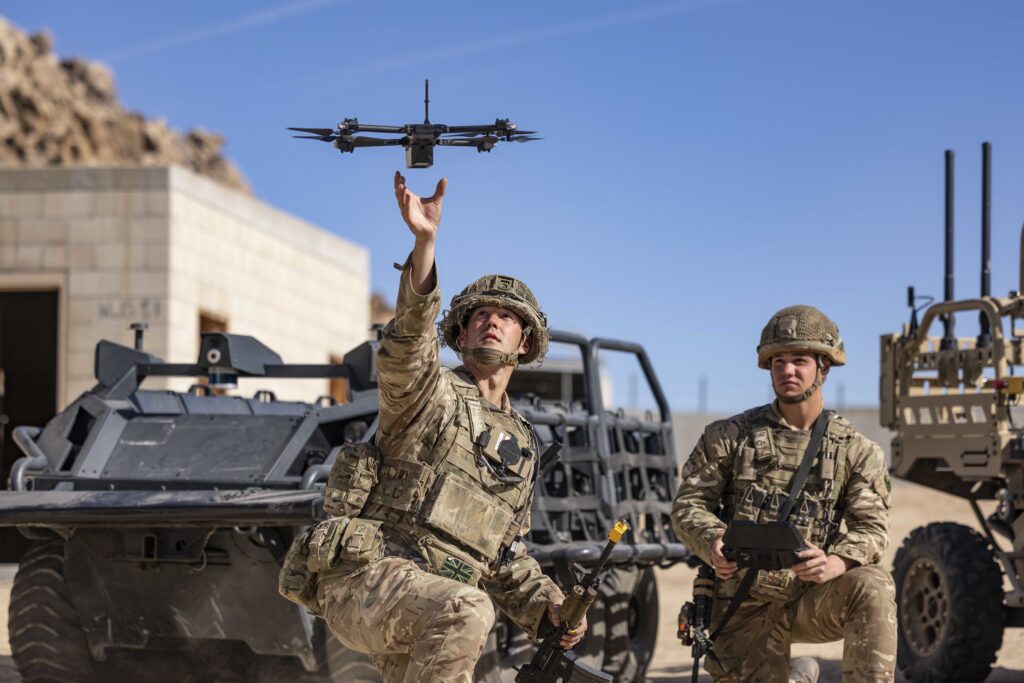The future of warfare is being shaped by rapid technological advancements in artificial intelligence, cyber warfare, and drones. This new arms race among nations is leading to unprecedented capabilities on the battlefield, but also raising critical ethical and legal concerns. The use of AI in autonomous weapons systems, cyber attacks on critical infrastructure, and the proliferation of drones all have serious implications for the future of conflict. As nations continue to invest in cutting-edge technologies, international cooperation and dialogue on the regulation of these emerging technologies becomes increasingly important. The future of warfare must prioritize human rights, international law, and global stability.
The New Arms Race: How Technology is Shaping the Future of Warfare
Introduction
The landscape of warfare has drastically changed in recent decades, with technological advancements playing a pivotal role in shaping the future of conflict. The emergence of new technologies, such as artificial intelligence, cyber warfare, and drones, has given rise to a new arms race among nations seeking to gain a competitive edge in the battlefield. These advancements have not only revolutionized the way wars are fought, but have also raised critical ethical and legal questions regarding the use of such technologies in warfare.
Artificial Intelligence
Artificial intelligence (AI) has become a game-changer in modern warfare, with nations investing heavily in the development of autonomous systems that can operate without human intervention. AI-powered weapons systems can analyze vast amounts of data in real-time, make decisions at lightning speed, and carry out precision strikes with unparalleled accuracy. However, the use of AI in warfare raises concerns about the potential for autonomous weapons to make life-and-death decisions without human oversight, leading to a debate over the ethics of delegating such power to machines.
Cyber Warfare
Cyber warfare has emerged as a powerful tool for nations seeking to gain a strategic advantage over their adversaries. Cyber attacks can target critical infrastructure, disrupt communication systems, and sabotage military operations without the need for traditional weapons. The ability to launch cyber attacks anonymously and with plausible deniability has made it an attractive option for states seeking to wage covert warfare. However, the interconnected nature of cyberspace also poses risks, as attacks on one nation’s infrastructure could have ripple effects that impact the global economy.
Drones
Drones, also known as unmanned aerial vehicles (UAVs), have become a staple in modern warfare due to their ability to conduct surveillance, reconnaissance, and targeted strikes without putting human pilots at risk. The proliferation of drones has raised concerns about the potential for a new arms race in unmanned aerial systems, as nations seek to develop drones with longer range, greater speed, and higher payloads. While drones offer tactical advantages on the battlefield, they also pose risks in terms of civilian casualties, as their use in targeted strikes can sometimes result in collateral damage.
Conclusion
The rapid pace of technological advancement is reshaping the future of warfare, raising critical questions about the ethical, legal, and strategic implications of using new technologies in conflict. As nations continue to invest in cutting-edge weapons systems, the need for international cooperation and dialogue on the regulation of emerging technologies has never been more urgent. The new arms race is not just about gaining a competitive edge in the battlefield, but about shaping the future of warfare in a way that prioritizes human rights, international law, and global stability.
